Lysoflam Tablet 10's
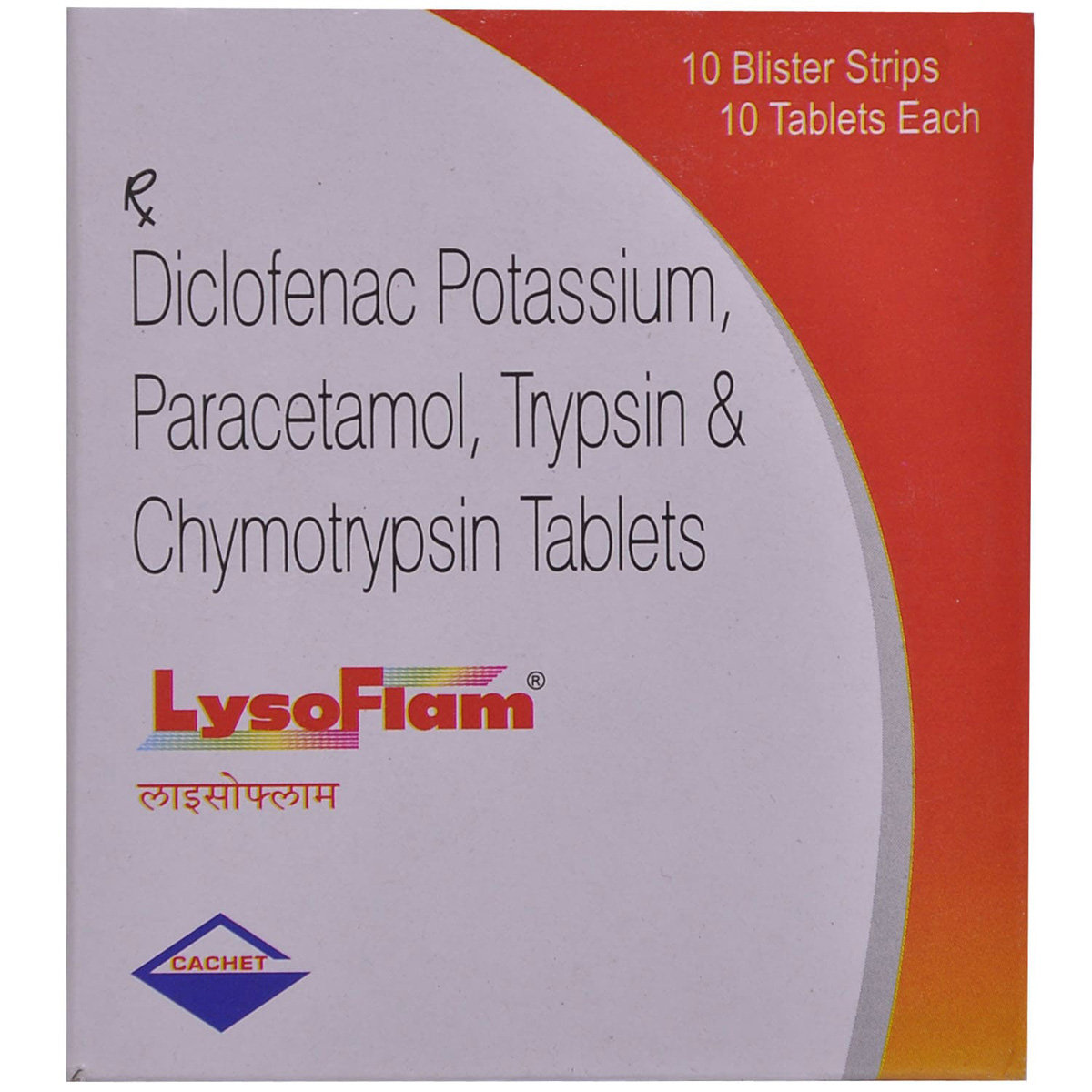

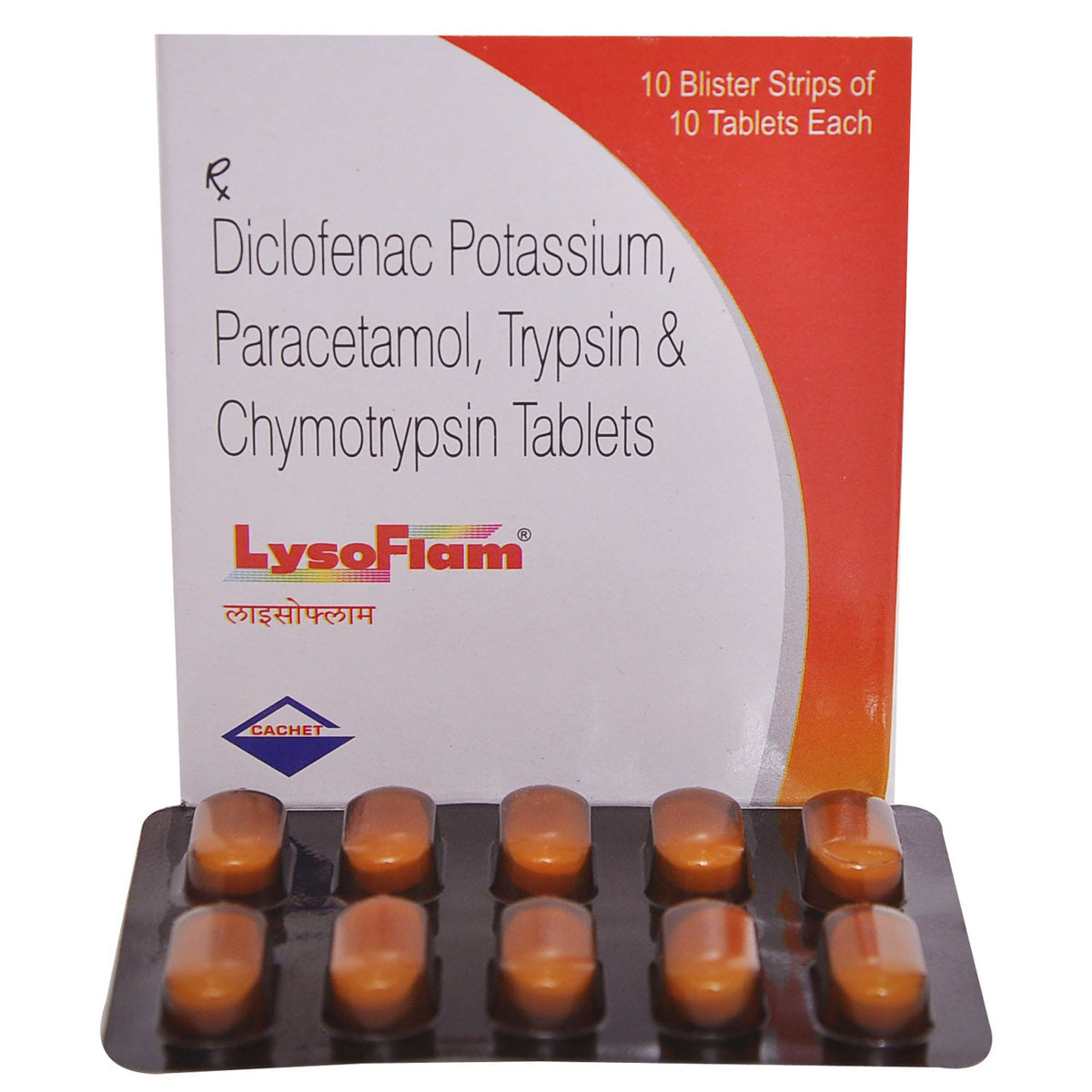



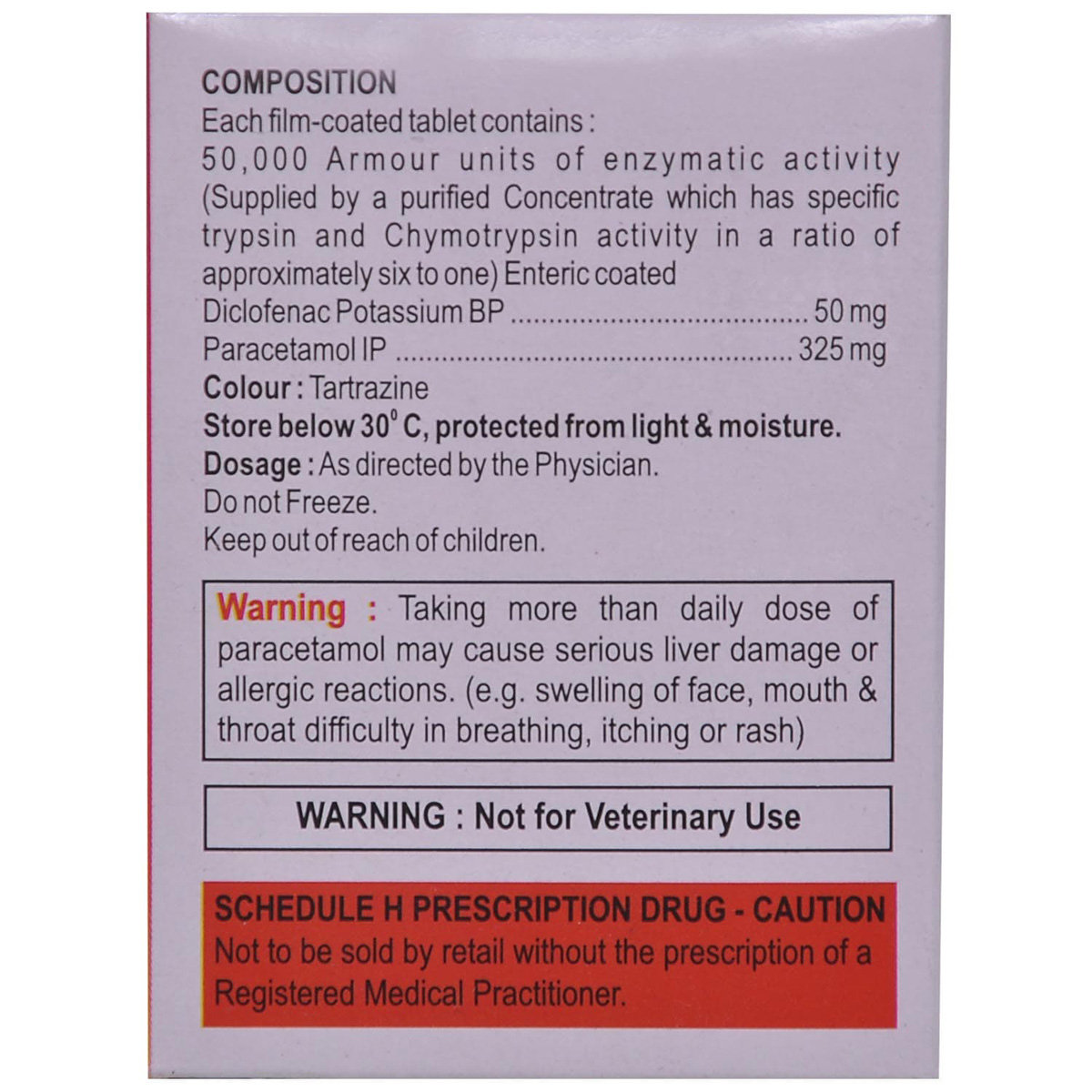


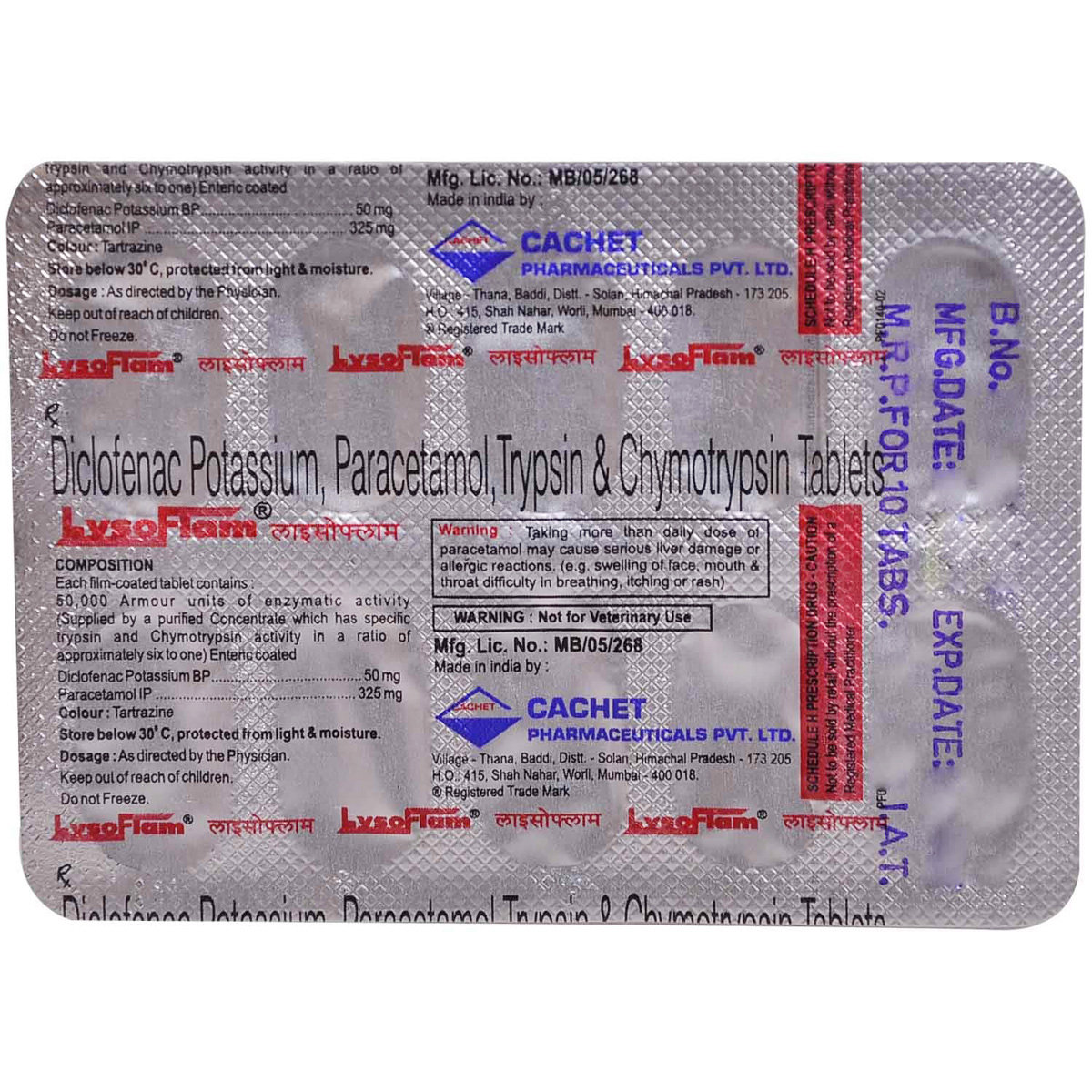
MRP ₹156.5
(Inclusive of all Taxes)
₹15.7 Cashback (10%)
Provide Delivery Location
Online payment accepted
 Prescription drug
Prescription drugWhats That
Manufacturer/Marketer :
Consume Type :
Expires on or after :
Return Policy :
About Lysoflam Tablet
Lysoflam Tablet is a combination medicine used to relieve pain and inflammation associated with osteoarthritis, rheumatoid arthritis, ankylosing spondylitis, muscle pain, and bone and joint pain. Pain is a symptom triggered by the nervous system, causing uncomfortable sensations in the body. Arthritis, also known as joint inflammation, is the tenderness and swelling of the joints. Symptoms include swelling, pain, and stiffness.
Lysoflam Tablet consists of Diclofenac (Diclofenac Potassium), Paracetamol, and Trypsin chymotrypsin. Diclofenac and Paracetamol work by blocking the effect of chemical messengers called prostaglandins by inhibiting cyclooxygenase (COX) enzymes. Thus, it reduces mild to moderate pain and inflammation at the injured or damaged site. Trypsin chymotrypsin breaks down the abnormal proteins at the site of inflammation, thereby reduces swelling and inflammation.
Lysoflam Tablet should be taken as prescribed by your doctor. Sometimes it may cause certain common side effects such as nausea, vomiting, stomach pain, loss of appetite, indigestion, and diarrhea. Most of these side effects do not require medical attention and will resolve gradually over time. However, you are advised to talk to your doctor if you experience these side effects persistently.
Consult your doctor if you are pregnant or breastfeeding. Lysoflam Tablet may cause drowsiness and dizziness, so drive with caution. Lysoflam Tablet is not recommended for children as safety and efficacy have not been established. Avoid consuming alcohol with Lysoflam Tablet as it could lead to increased drowsiness and dizziness; it might also increase the risk of stomach bleeding. Keep your doctor informed about your health condition and medicines to rule out any interactions. It is advised not to take more than the prescribed dose of medicine and for a longer period.
Uses of Lysoflam Tablet
Directions for Use
Key Benefits
Lysoflam Tablet is a combination of three drugs, namely: Diclofenac, Paracetamol, and Trypsin chymotrypsin. Lysoflam Tablet is used to relieve pain and inflammation associated with osteoarthritis, rheumatoid arthritis, and ankylosing spondylitis. Diclofenac is an NSAID (Non-Steroidal Anti-Inflammatory Drug) and Paracetamol is an analgesic. Diclofenac and Paracetamol work by blocking the effect of chemical messengers called prostaglandins by inhibiting cyclooxygenase (COX) enzymes, thereby reducing mild to moderate pain and inflammation at the injured or damaged site. Trypsin chymotrypsin is a combination of enzymes that breaks down the abnormal proteins at the site of inflammation, thereby reducing swelling and inflammation by increasing the blood supply at the affected area.
Storage
Drug Warnings
Avoid taking Lysoflam Tablet if you are allergic to any of its contents; if you have/had severe heart problems, active or recurring peptic ulcer, gastrointestinal perforation, bleeding problems, inflammation of intestines, or severe liver or kidney impairment. Inform your doctor if you have/had high blood pressure, heart problems, high cholesterol, diabetes, asthma, angina, bowel problems, a habit of smoking, or liver or kidney problems. Consult your doctor if you are pregnant or breastfeeding. Stop taking Lysoflam Tablet and consult your doctor immediately if you have stomach pain or any signs of bleeding in the intestine or stomach, such as blood in stools. This medicine is not recommended for use in children as safety is not established. It is advised not to take more than the prescribed dose of Lysoflam Tablet for a prolonged period.
Drug-Drug Interactions
Drug-Drug Interactions
Login/Sign Up
Co-administration of Lysoflam Tablet with Meloxicam can increase the risk or severity of gastrointestinal side effects.
How to manage the interaction:
Taking Meloxicam with Lysoflam Tablet is not recommended as it can possibly result in an interaction, it can be taken if your doctor has advised it. However, consult your doctor immediately if you experience symptoms such as dizziness, lightheadedness, red or black, tarry stools, coughing up or vomiting fresh or dried blood that looks like coffee grounds, severe headache, and weakness. Do not stop any medication without doctor's advise.
Taking Lysoflam Tablet with Enoxaparin can increase the risk of bleeding complications.
How to manage the interaction:
There may be a possible interaction between Lysoflam Tablet and Enoxaparin, but they can be taken together if your doctor has prescribed them. However, consult your doctor immediately if you experience any unusual bleeding or bruising, swelling, vomiting, blood in your urine or stools, headache, dizziness, or weakness. Do not discontinue any medications without consulting a doctor.
Coadministration of Lysoflam Tablet with Ketoconazole may increase the risk of liver problems.
How to manage the interaction:
There may be a possible interaction between Lysoflam Tablet and Ketoconazole, but they can be taken together if a doctor has prescribed them. However, consult a doctor immediately if you have fever, chills, joint pain or swelling, unusual bleeding or bruising, skin rash, itching, loss of appetite, fatigue, nausea, vomiting, abdominal pain, dark colored urine, light colored stools, and/or yellowing of the skin or eyes. Do not discontinue any medications without consulting a doctor.
Taking Lysoflam Tablet with human immunoglobulin may increase the risk of kidney problems.
How to manage the interaction:
Although there is an interaction between Human immunoglobulin and Lysoflam Tablet, you can take these medicines together if prescribed by a doctor. However, consult the doctor immediately if you experience symptoms such as nausea, vomiting, loss of appetite, increased or decreased urination, sudden weight gain or weight loss, fluid retention, swelling, shortness of breath, muscle cramps, tiredness, weakness, dizziness, confusion, and irregular heart rhythm. Do not discontinue any medications without consulting a doctor.
Taking Lysoflam Tablet with Ibrutinib can increase the risk of bleeding tendencies.
How to manage the interaction:
There may be a possible interaction between Lysoflam Tablet and Ibrutinib, but they can be taken together if a doctor has prescribed them. However, consult a doctor immediately if you experience any unusual bleeding, dizziness, lightheadedness, red or black, tarry stools, coughing up or vomiting fresh or dried blood that looks like coffee grounds, or severe headaches. Do not discontinue any medications without consulting a doctor.
Co-administration of Lysoflam Tablet with Celecoxib may increase the risk of stomach bleeding and ulcers.
How to manage the interaction:
Although there is a interaction between Lysoflam Tablet and Celecoxib, but it can be taken if your doctor has advised it. Consult a doctor if you experience symptoms like blood in your urine or stool (or a black stool), severe bruising, prolonged nosebleeds, feeling dizzy or lightheaded, weakness or severe headache, vomiting blood or coughing up blood, heavy menstrual bleeding (in women), difficulty breathing, or chest pain. Do not discontinue any medication without consulting a doctor.
Co administration of Lysoflam Tablet with Leflunomide may result in liver problems.
How to manage the interaction:
Co-administration of Lysoflam Tablet and Leflunomide can lead to an interaction; it can be taken if advised by your doctor. However, if you have a fever, chills, joint pain or swelling, unusual bleeding or bruising, skin rash, itching, loss of appetite, fatigue, nausea, vomiting, abdominal pain, dark-colored urine, light-colored stools, or yellowing of the skin or eyes. Do not stop using any medication without consulting your doctor.
Concomitant administration of Lysoflam Tablet and furosemide may decrease the therapeutic efficacy of furosemide and adversely affect renal function.
How to manage the interaction:
There may be a possible interaction between Lysoflam Tablet and furosemide, but they can be taken together if your doctor has prescribed them. However, consult your doctor immediately if you experience symptoms like nausea, dizziness, irregular heartbeats, altered blood pressure, tingling. Do not stop using any medications without first talking to your doctor.
Co-administration of Lysoflam Tablet and tenofovir alafenamide may cause kidney problems.
How to manage the interaction:
There may be a possible interaction between Lysoflam Tablet and Tenofovir alafenamide but they can be taken together if your doctor has prescribed them. However, consult your doctor immediately if you experience symptoms such as such as nausea, vomiting, loss of appetite, increased or decreased urination, sudden weight gain or weight loss, fluid retention, swelling, shortness of breath, bone pain, muscle cramps, tiredness, weakness, dizziness, confusion, and irregular heart rhythm. Do not stop using any medications without talking to your doctor.
Taking Dasatinib together with Lysoflam Tablet may increase the risk of bleeding.
How to manage the interaction:
There may be a possible interaction between Lysoflam Tablet and Dasatinib but they can be taken together if a doctor has prescribed them. However, consult a doctor immediately if you experience dizziness, red or black, tarry stools, or severe headaches. Do not discontinue any medications without consulting a doctor.
Drug-Food Interactions
Drug-Food Interactions
Login/Sign Up
Diet & Lifestyle Advise
- Physical activity helps strengthen muscles and relieves joint stiffness. Gentle activities like 20-30 minutes of walking or swimming would be helpful.
- Performing yoga may also help in improving joint flexibility and pain management.
- Maintain a healthy weight by performing regular low-strain exercises and eating healthy food.
- Get adequate sleep, as resting the muscles can help in reducing inflammation and swelling.
- Foods containing flavonoids help in reducing inflammation. These include soy, berries, broccoli, grapes and green tea.
- Avoid smoking and alcohol consumption.
- De-stress yourself by meditating, reading books, taking a warm bubble bath or listening to soothing music.
- Acupuncture, massage and physical therapy may also be helpful.
- Eat food rich in antioxidants such as berries, spinach, kidney beans, dark chocolate, etc.
Side Effects of Lysoflam Tablet
- Nausea
- Vomiting
- Stomach pain
- Diarrhea
- Indigestion
- Loss of appetite
- Heartburn
Habit Forming
Therapeutic Class
All Substitutes & Brand Comparisons
RX
Out of StockDiponac XL 50mg/325mg Tablet
₹85
(₹7.65 per unit)
45% CHEAPERRX
Out of StockDenblue TC Tablet
₹90
(₹8.1 per unit)
42% CHEAPERRX
Out of StockCryptonac Forte 50mg/325mg Tablet
₹94
(₹8.46 per unit)
39% CHEAPER
Product Substitutes
Author Details
We provide you with authentic, trustworthy and relevant information
Drug-Diseases Interactions
Drug-Diseases Interactions
Login/Sign Up
FAQs
Lysoflam Tablet contains Diclofenac, Paracetamol, and Trypsin chymotrypsin. Diclofenac and Paracetamol work by blocking the effect of chemical messengers that cause pain and inflammation. Trypsin chymotrypsin breaks down the abnormal proteins at the site of inflammation, thereby reducing swelling and inflammation.
Do not take any other medicines for pain relief, such as NSAIDs along with Lysoflam Tablet , unless prescribed by a doctor, as it might increase the risk of side effects.
Avoid exceeding the dose and duration advised by the doctor. Taking more than the daily dose of Lysoflam Tablet might cause serious liver damage or allergic reactions like rash, difficulty breathing, and swelling of the face, throat, and mouth. Therefore, Lysoflam Tablet should not be taken for longer durations unless prescribed by the doctor.
Drug-Drug Interactions Checker List
- ASPIRIN
- CLOPIDOGREL
- CHLORAMPHENICOL
- DIGOXIN
- METHOTREXATE
- ZIDOVUDINE
- CICLOSPORIN
- WARFARIN
Special Advise
Disease/Condition Glossary
Pain: Pain is a symptom triggered by the nervous system, causing uncomfortable sensations in the body. Pain may be dull or sharp; it might be constant or may come and go. The tolerance level of pain might vary from person to person. Pain can be generalized (overall body aches) or localized (affecting a specific area of the body). The common causes of pain include headache, muscle strain, cramps, cuts, bone fractures, and arthritis.
Osteoarthritis: It is a joint disease in which the two ends of the joints come together due to the breakdown of a protective covering called cartilage. Due to the absence of this protective covering, the joints rub against each other, leading to pain and stiffness. Symptoms include pain, stiffness, inflammation and tenderness.
Rheumatoid arthritis: It is an auto-immune disease (the body's immune system attacks its tissue), leading to joint pain and damage. Symptoms of rheumatoid arthritis include pain, swelling, stiffness, deformities and loss of joint function.
Ankylosing spondylitis: It causes pain and stiffness in the spine. The pain generally starts in the lower back and can spread to the neck, damaged joints, or other body parts. Ankylosing spondylitis symptoms include decreased flexibility which usually leads to a hunched-forward posture and pain in the back and joints.

Have a query?
Buy best C.n.s Drugs products by
Intas Pharmaceuticals Ltd
Sun Pharmaceutical Industries Ltd
Torrent Pharmaceuticals Ltd
Alkem Laboratories Ltd
Abbott India Ltd
Cipla Ltd
Alteus Biogenics Pvt Ltd
Micro Labs Ltd
Lupin Ltd
Ipca Laboratories Ltd
D D Pharmaceuticals Pvt Ltd
Icon Life Sciences
Mankind Pharma Pvt Ltd
Tripada Healthcare Pvt Ltd
Arinna Lifesciences Ltd
Linux Laboratories Pvt Ltd
East West Pharma India Pvt Ltd
La Renon Healthcare Pvt Ltd
Talent India Pvt Ltd
Tas Med India Pvt Ltd
Zydus Healthcare Ltd
Cnx Health Care Pvt Ltd
Eris Life Sciences Ltd
Leeford Healthcare Ltd
Emcure Pharmaceuticals Ltd
Macleods Pharmaceuticals Ltd
Sigmund Promedica
Aristo Pharmaceuticals Pvt Ltd
Dr Reddy's Laboratories Ltd
Troikaa Pharmaceuticals Ltd
Consern Pharma Ltd
Zydus Cadila
Shine Pharmaceuticals Ltd
Wockhardt Ltd
Ardent Life Sciences Pvt Ltd
Crescent Formulations Pvt Ltd
Theo Pharma Pvt Ltd
Reliance Formulation Pvt Ltd
Ikon Pharmaceuticals Pvt Ltd
Propel Healthcare
Neon Laboratories Ltd
Jagsam Pharma
Msn Laboratories Pvt Ltd
Morepen Laboratories Ltd
Pulse Pharmaceuticals
Sanofi India Ltd
Med Manor Organics Pvt Ltd
Hetero Healthcare Pvt Ltd
Novartis India Ltd
Crescent Therapeutics Ltd
Elder Pharmaceuticals Ltd
Solvate Laboratories Pvt Ltd
Akumentis Healthcare Ltd
Mova Pharmaceutical Pvt Ltd
Psyco Remedies Ltd
Tripada Lifecare Pvt Ltd
Ajanta Pharma Ltd
Cyrus Remedies Pvt Ltd
Medishri Healthcare Pvt Ltd
Cadila Healthcare Ltd
Glenmark Pharmaceuticals Ltd
Matteo Health Care Pvt Ltd
Hbc Life Sciences Pvt Ltd
Lyf Healthcare
Matias Healthcare Pvt Ltd
Mesmer Pharmaceuticals
Alembic Pharmaceuticals Ltd
Capital Pharma
Crescent Pharmaceuticals
Medopharm Pvt Ltd
Alniche Life Sciences Pvt Ltd
Kivi Labs Ltd
Talin Remedies Pvt Ltd
USV Pvt Ltd
Quince Lifesciences Pvt Ltd
Solis Pharmaceuticals
Infivis Life Care
Zuventus Healthcare Ltd
Cadila Pharmaceuticals Ltd
Pfizer Ltd
Wallace Pharmaceuticals Pvt Ltd
A N Pharmacia Laboratories Pvt Ltd
Blue Cross Laboratories Pvt Ltd
Jenburkt Pharmaceuticals Ltd
Lia Life Sciences Pvt Ltd
Mano Pharma
Medley Pharmaceuticals Ltd
Primus Remedies Pvt Ltd
FDC Ltd
Maneesh Pharmaceuticals Ltd
Apex Laboratories Pvt Ltd
Gagnant Healthcare Pvt Ltd
Ozone Pharmaceuticals Ltd
RPG Life Sciences Ltd
Strides Shasun Ltd
Unichem International
GlaxoSmithKline Pharmaceuticals Ltd
Kuresys Labs Pvt Ltd
LA Pharma
Trion Pharma India Llp
Alcohol
Safe if prescribed
Avoid consumption of alcohol while taking Lysoflam Tablet as it may increase drowsiness. It may also increase the risk of stomach bleeding.
Pregnancy
Consult your doctor
Inform your doctor if you are pregnant or planning pregnancy before taking Lysoflam Tablet . Your doctor may prescribe this medicine if the benefits outweigh the risks
Breast Feeding
Consult your doctor
Inform your doctor if you are breastfeeding before taking Lysoflam Tablet . Your doctor may prescribe this medicine if the benefits outweigh the risks.
Driving
Safe if prescribed
Lysoflam Tablet may cause dizziness and drowsiness. Do not drive or operate machinery unless you are alert.
Liver
Consult your doctor
Please consult your doctor if you have liver problems. Dose adjustment may be needed. Lysoflam Tablet is not recommended for patients with severe hepatic impairment.
Kidney
Consult your doctor
Please consult your doctor if you have kidney impairment. Dose adjustment may be needed. Lysoflam Tablet is not recommended for patients with severe renal impairment.
Children
Safe if prescribed
Lysoflam Tablet is not recommended for children as safety and effectiveness have not been established.




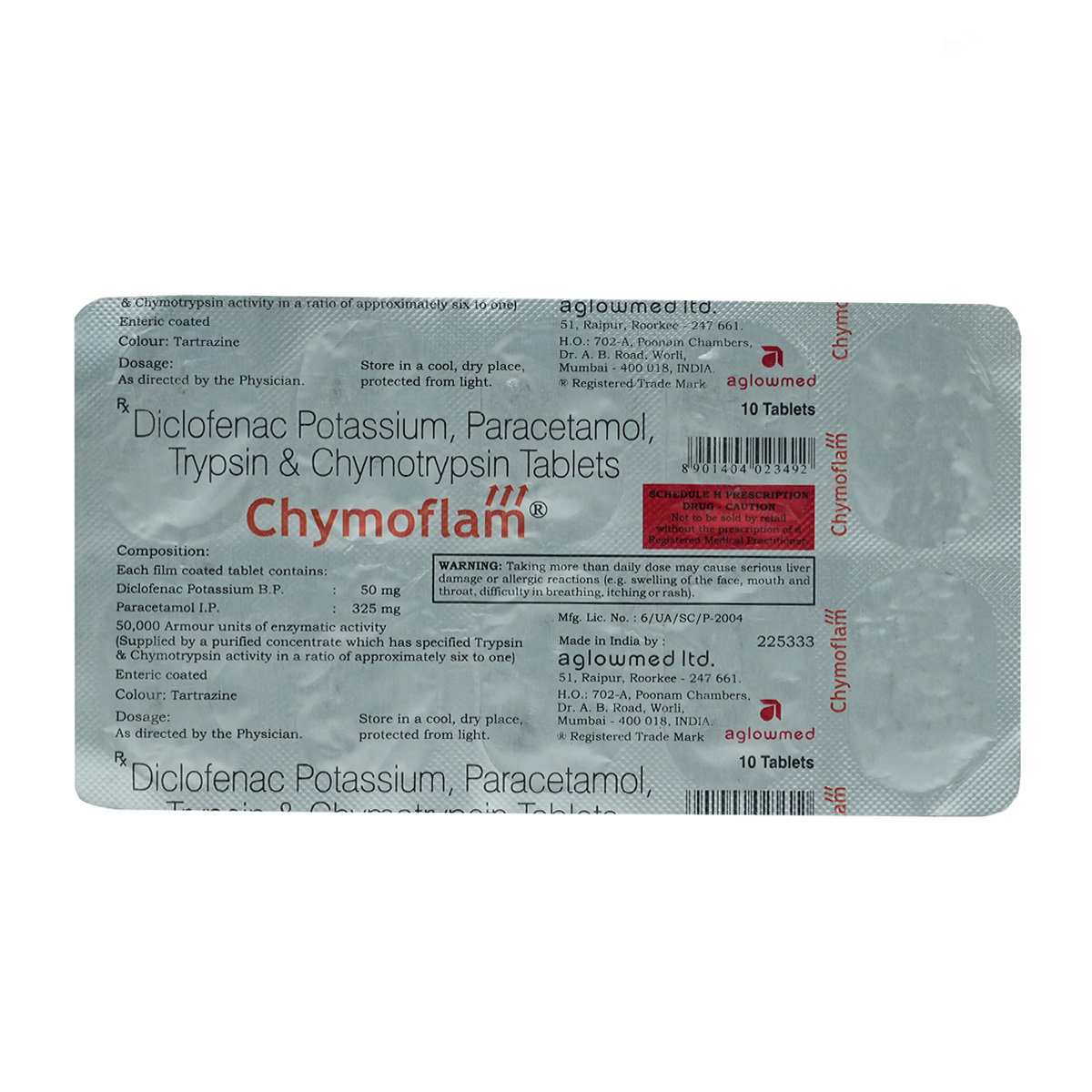

.jpg?tr=q-85)

